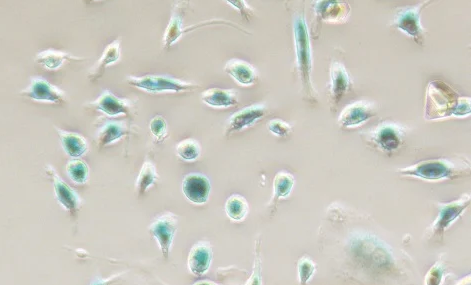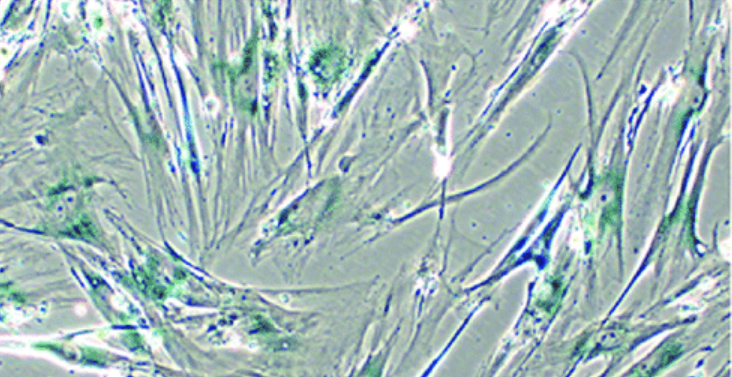Technical Support技术支持
CONTACT US
 400 179 0116
400 179 0116
24-hour service hotline marketing@ldraft.comE-mail
marketing@ldraft.comE-mail
There are many kinds of cell aging tests, depending on which one you choose, let's take a look at mine
source:QiDa technoligy views:1324 time:2024-08-13
There are many kinds of cell aging tests, depending on which one you choose, let's take a look at mine
Cellular senescence research is of great significance for understanding the aging process of organisms and preventing and treating age-related diseases. By studying the mechanisms of cellular aging, we can reveal the molecular and genetic factors that lead to decreased cell function and tissue degeneration. This could help develop new drugs and treatments to slow the aging process and improve the quality of life of older people. In addition, cell aging research can also provide a theoretical basis for regenerative medicine and tissue engineering, and promote the development of related fields Aging staining of A2780 cells
Aging staining of A2780 cells Senescence staining of MRC-5 cells
How to do the cell aging experiment?
Learn every step and easily Skill the protocol of cell aging!
1. Cell culture: First of all, we need to prepare the cell lines required for the experiment, and carry out cell culture and passage to ensure that the cells are in a good state of growth.
2. Sterilized cell sheets were pre-placed in 6-well culture plates before cell inoculation, and 1×10^5cells were added to each hole, and cultured overnight at 37℃ and 5% CO2, so that the cells grew to about 90% on the cell sheets
3. Wash the cells twice with PBS;
4.2% paraformaldehyde +0.2% isovaleraldehyde fixation,3-5 minutes
5. Wash the cells twice for 2-3 minutes each time
6. X-Gal solution was added to immerse cell tablets and incubated at 37℃ for 4-8 hours or overnight. The 6-well culture plate was wrapped with plastic wrap to prevent evaporation of the dye solution
7. The cells were dehydrated and transparent in this order: 95% alcohol I (2 minutes) →100% alcohol I (5 minutes) → xylene I (3 minutes), and then washed twice with PBS;
8. Gum seal, incubate at room temperature for 5 minutes away from light;
9.PBS wash once:
10. Calculation of senescent cells: 400 cells were counted under each film under the microscope to determine the percentage of X-Gal staining positive cells (senescent cells) in the cell population, that is, senescent cell rate (number of blue-dyed cells/total number of cells ×100%).
Precautions for cell senescence detection
① The X-Gal solution needs to be used on the spot, and the concentration used is generally 4mg/ml.
(2) The cell fixation time is too long or the cleaning is not clean after the fixation, which will affect the subsequent enzyme reaction.
There are many kinds of cell aging detection, X-Gal detection is the most affordable, in addition to PCR, flow multifactor detection, antibody chip detection, etc. Students to explore on their own, learn a little every week, there will always be progress.
Senescence staining of MRC-5 cells
How to do the cell aging experiment?
Learn every step and easily Skill the protocol of cell aging!
1. Cell culture: First of all, we need to prepare the cell lines required for the experiment, and carry out cell culture and passage to ensure that the cells are in a good state of growth.
2. Sterilized cell sheets were pre-placed in 6-well culture plates before cell inoculation, and 1×10^5cells were added to each hole, and cultured overnight at 37℃ and 5% CO2, so that the cells grew to about 90% on the cell sheets
3. Wash the cells twice with PBS;
4.2% paraformaldehyde +0.2% isovaleraldehyde fixation,3-5 minutes
5. Wash the cells twice for 2-3 minutes each time
6. X-Gal solution was added to immerse cell tablets and incubated at 37℃ for 4-8 hours or overnight. The 6-well culture plate was wrapped with plastic wrap to prevent evaporation of the dye solution
7. The cells were dehydrated and transparent in this order: 95% alcohol I (2 minutes) →100% alcohol I (5 minutes) → xylene I (3 minutes), and then washed twice with PBS;
8. Gum seal, incubate at room temperature for 5 minutes away from light;
9.PBS wash once:
10. Calculation of senescent cells: 400 cells were counted under each film under the microscope to determine the percentage of X-Gal staining positive cells (senescent cells) in the cell population, that is, senescent cell rate (number of blue-dyed cells/total number of cells ×100%).
Precautions for cell senescence detection
① The X-Gal solution needs to be used on the spot, and the concentration used is generally 4mg/ml.
(2) The cell fixation time is too long or the cleaning is not clean after the fixation, which will affect the subsequent enzyme reaction.
There are many kinds of cell aging detection, X-Gal detection is the most affordable, in addition to PCR, flow multifactor detection, antibody chip detection, etc. Students to explore on their own, learn a little every week, there will always be progress.







